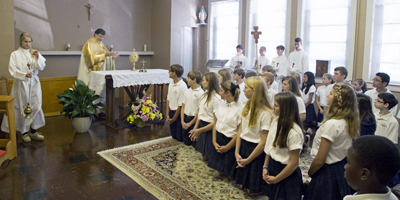
As educators scramble to adjust to a whole set of new school challenges brought on by the pandemic, they also have to keep the focus on old challenges.
One of the most persistent issues faced in schools, and society at large, is bullying.
As October marks National Bullying Prevention Month, school leaders in the diocese strive to highlight a better path through the teachings of Christ.
Bullying Prevention Month was initiated by PACER’s National Bullying Prevention Center in 2006 to raise awareness about the devastating and often long-term effects of bullying.
In light of that, some schools are going beyond one month and are incorporating a comprehensive program for the whole year.
Blessed Sacrament in Charleston and St. Anne in Rock Hill are two schools that are using a Gospel-based program called Friendzy.
“We always focus on bullying in general, but since the kids had been gone so long we felt we really needed to focus on social and emotional learning” in a more in-depth way, said Shaileen Riginos, principal at St. Anne.

Schools closed in mid-March due to the pandemic and many students only recently returned to the classroom. Riginos said some families were very isolated while others remained social, which makes addressing social and emotional health that much more important.
The Friendzy program is divided into three age groups and has eight units, each focused on a specific Bible verse. For example, the first unit is based on Genesis: “The Lord God said it is not good for man to be alone.”
Riginos said exclusion, even if it isn’t intentional, is the biggest form of bullying among children and is especially noticeable in small schools.
Statistics show one of every five students reports being bullied during the school year, while the percentage of individuals who have experienced cyberbullying has nearly doubled in the last decade.
Teachers encourage students to be emotionally intelligent by noticing when others are upset and responding in an empathetic way. They also discuss the scientific premise of mirroring emotions: how people naturally respond in kind to seeing others smile or laugh.
Riginos said St. Anne will employ the program all year, with daily reminders to watch out for each other, as God watches out for all.
How to be involved during National Bullying Prevention Month:
∗ Celebrate Unity Day on Oct. 21 by wearing the color orange to send the message that bullying is never acceptable.
∗ Find free distance learning resources to engage students in social emotional learning and bullying prevention.
∗ Encourage children to include others with the Include Someone, Make A Difference campaign.
For more information about National Bullying Prevention Month, visit PACER websites dedicated to parents and professionals, middle and high school students, and elementary students.



